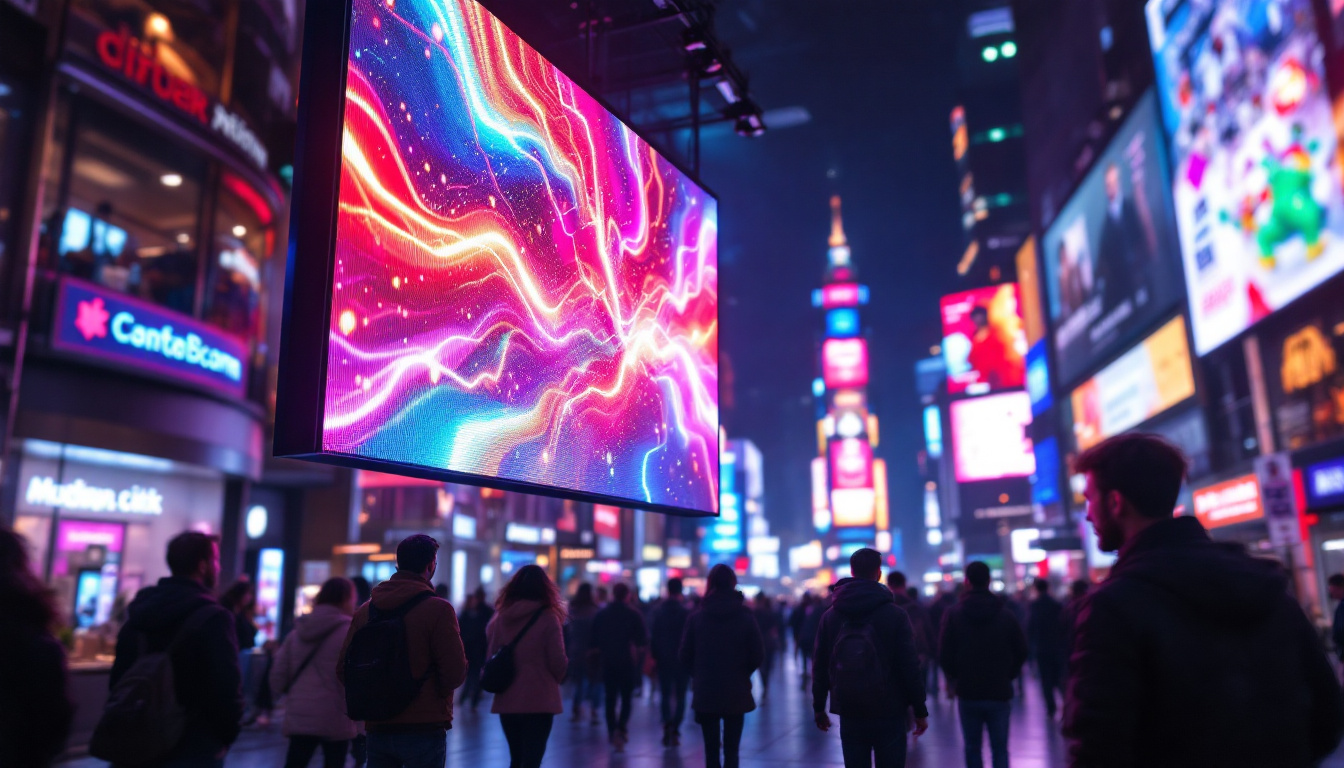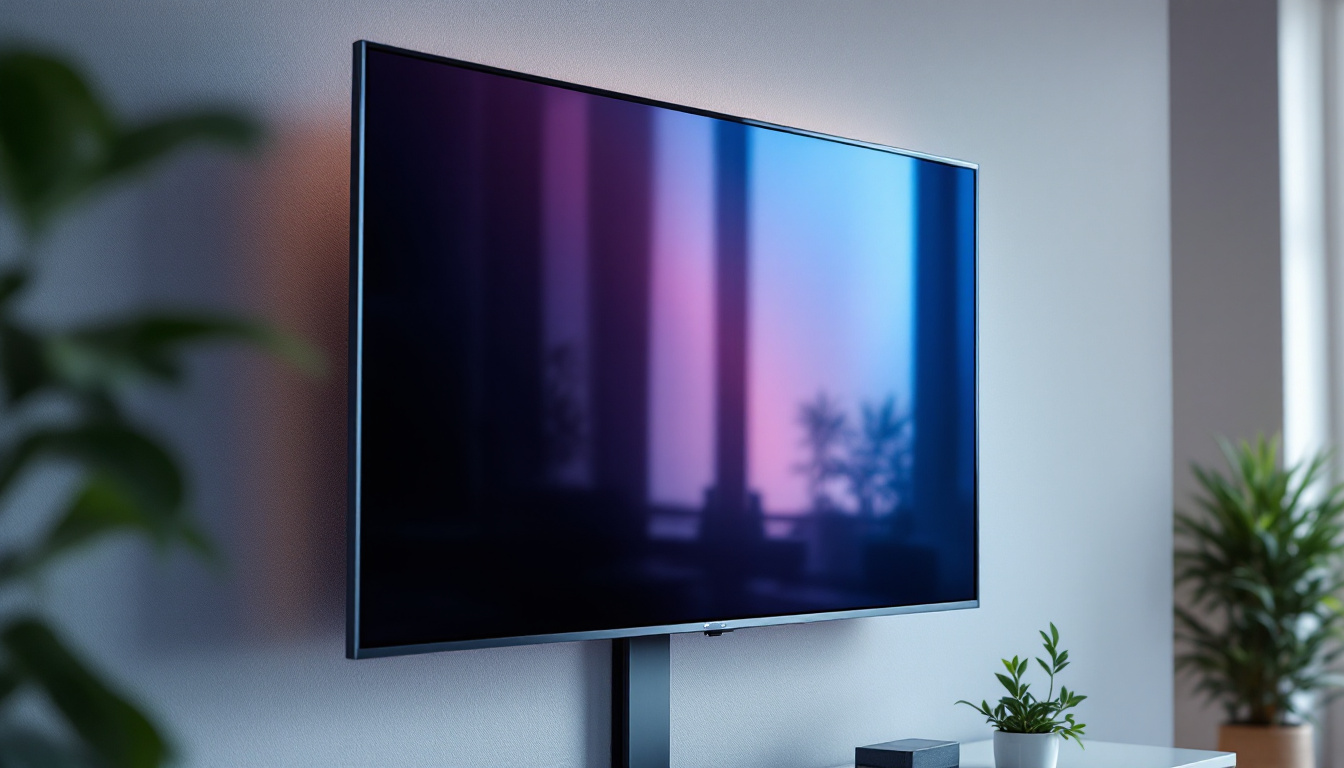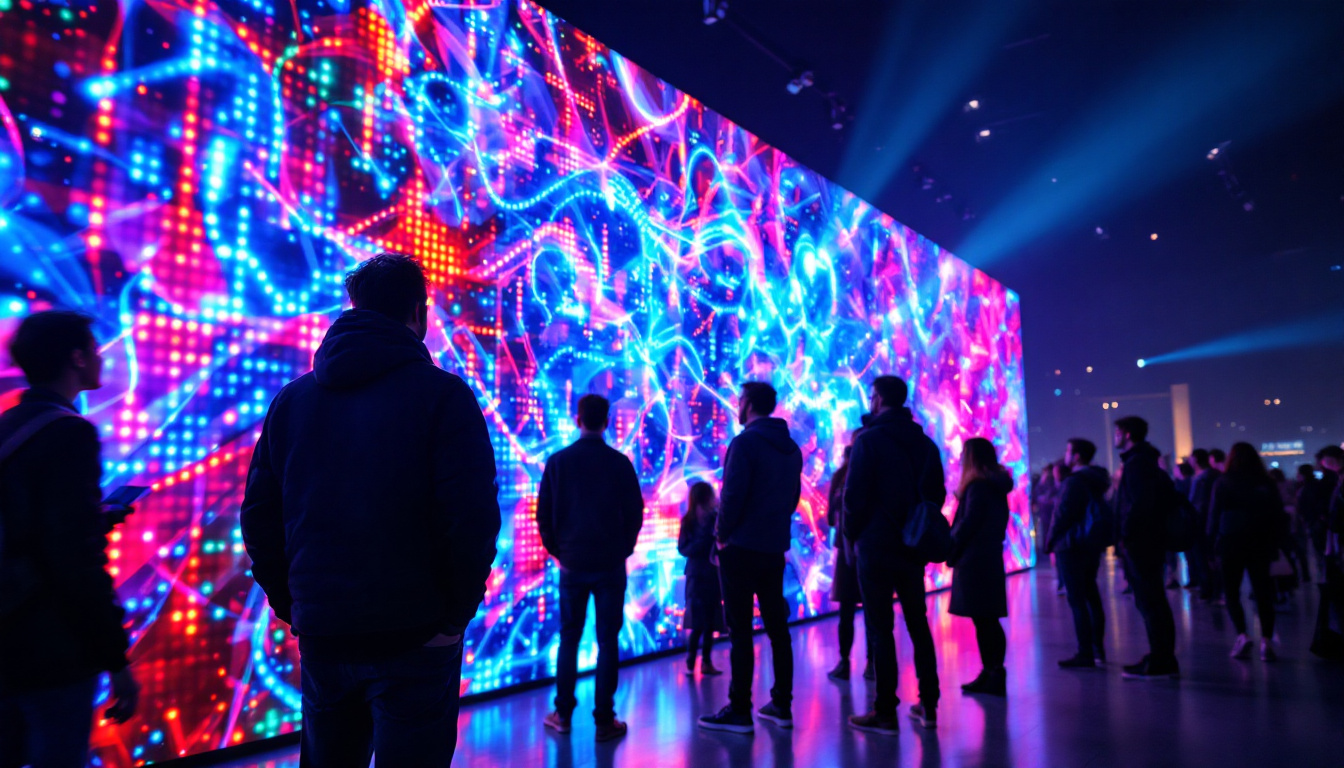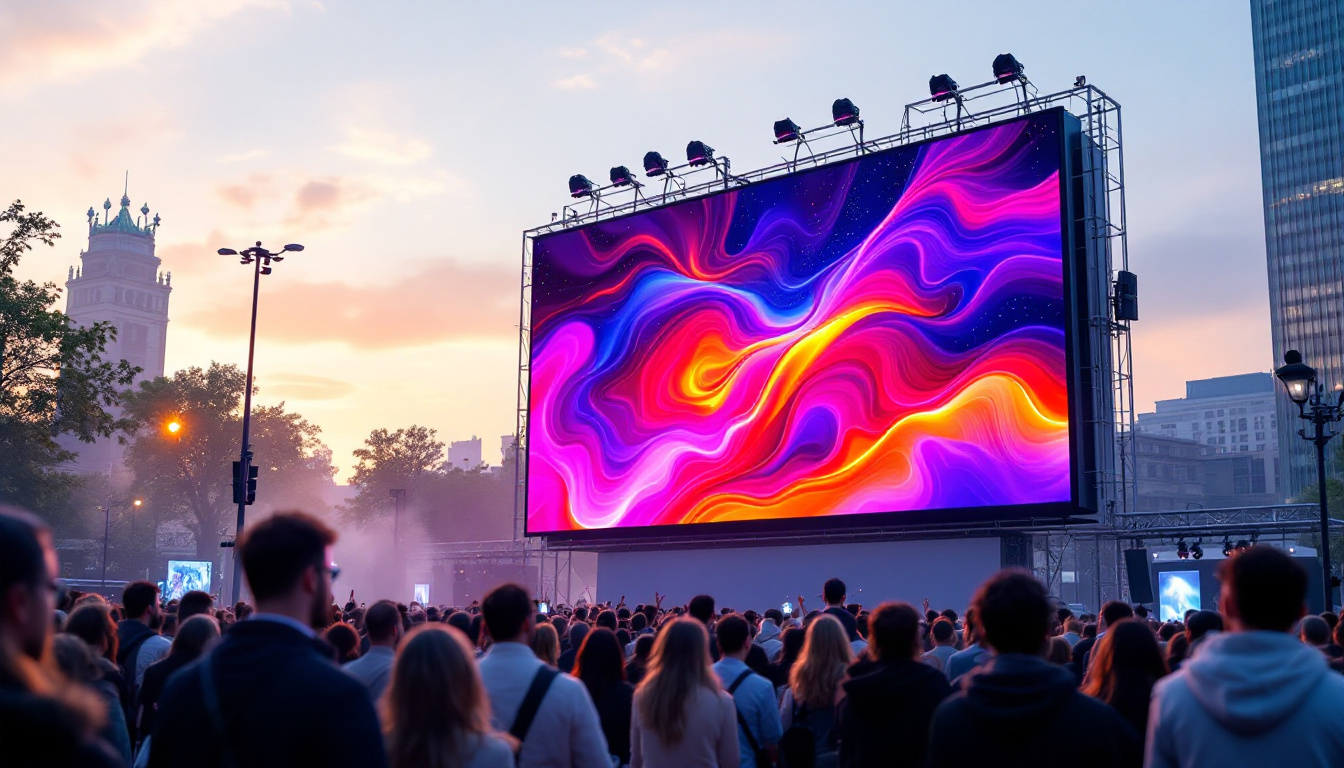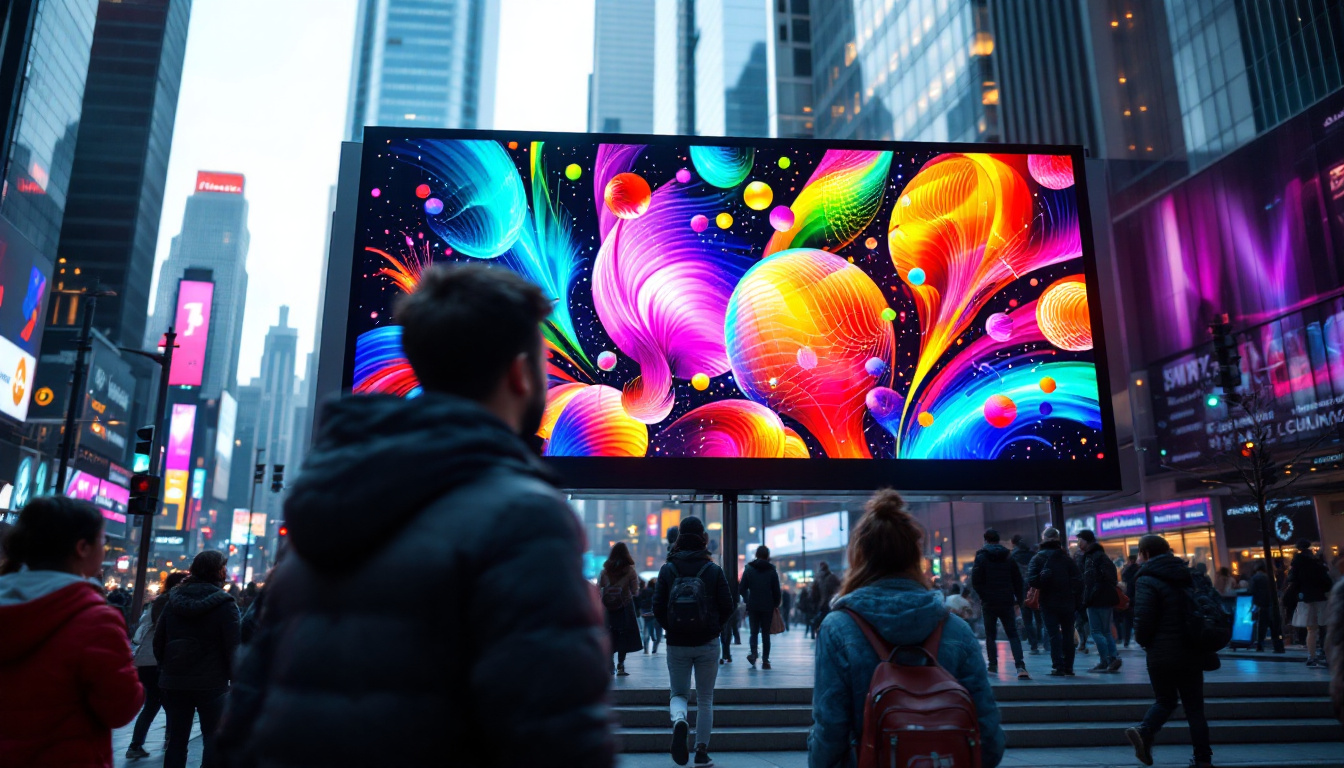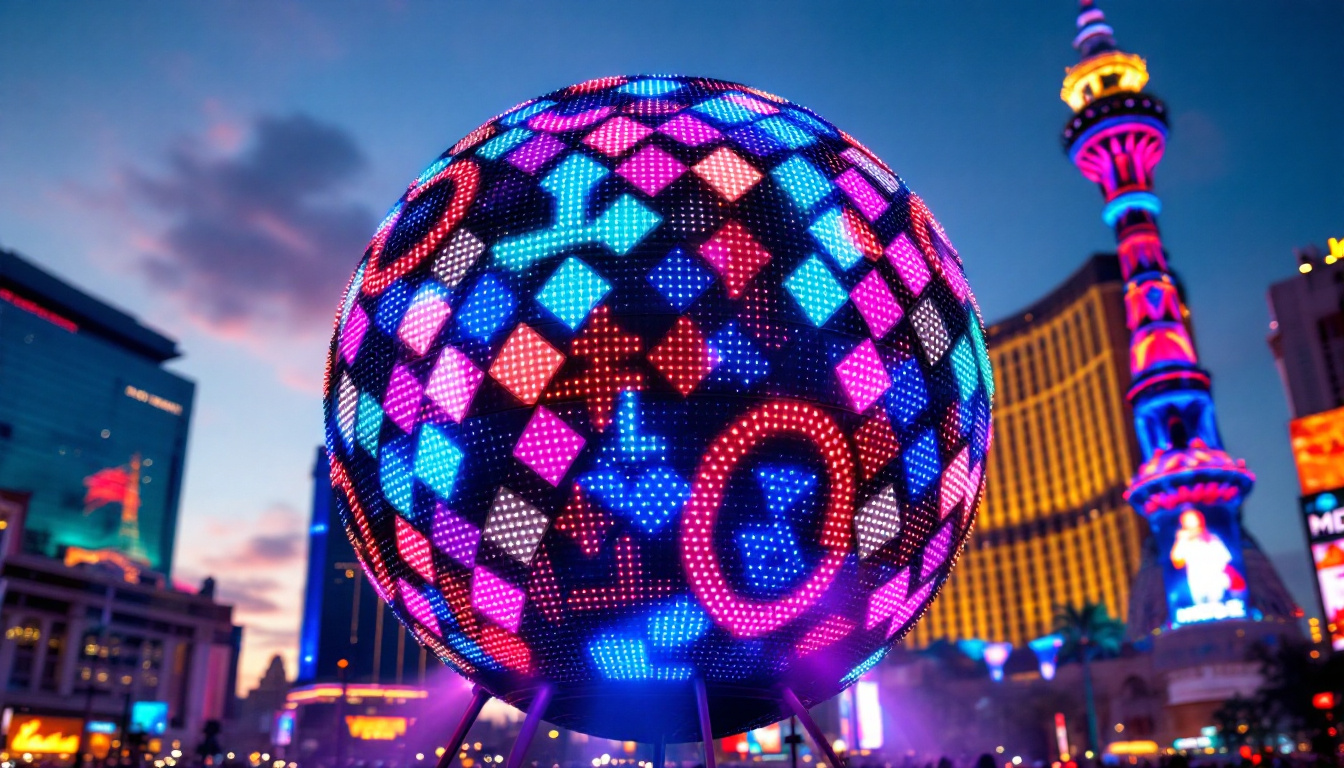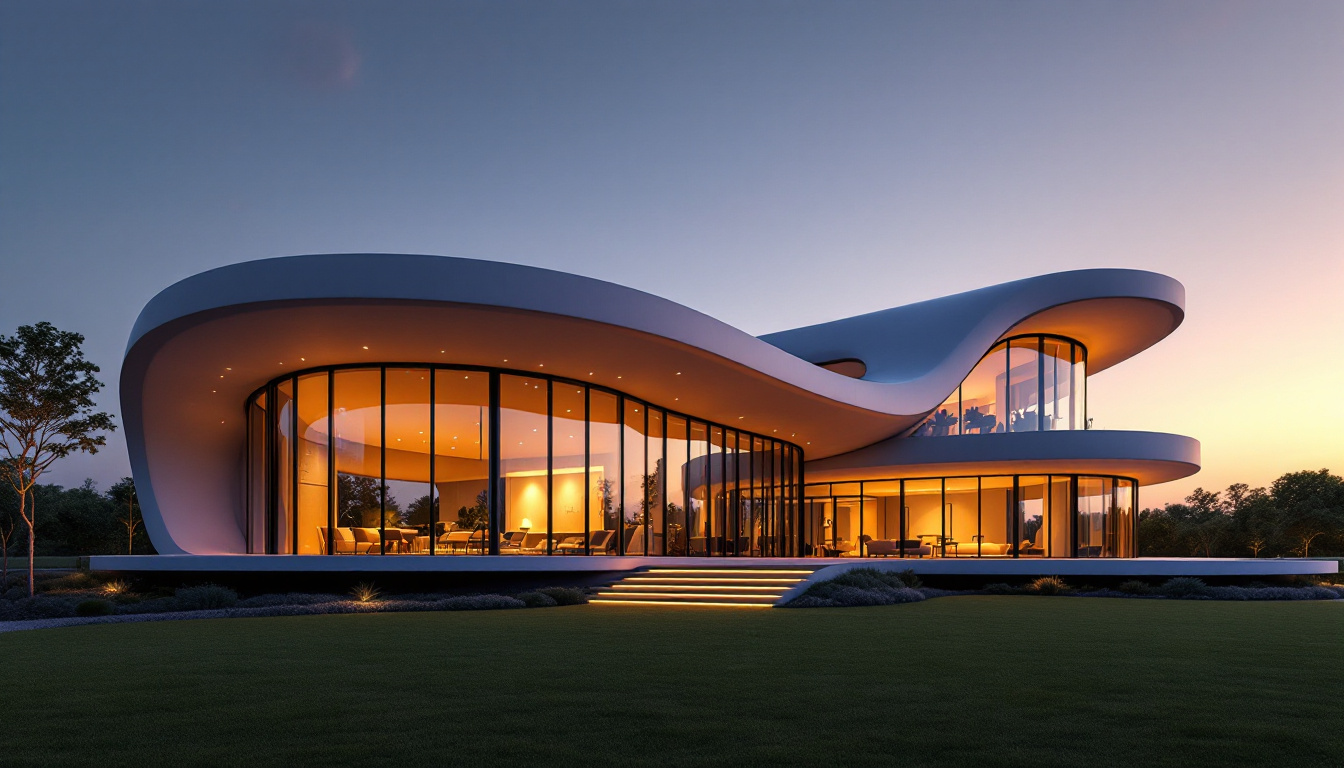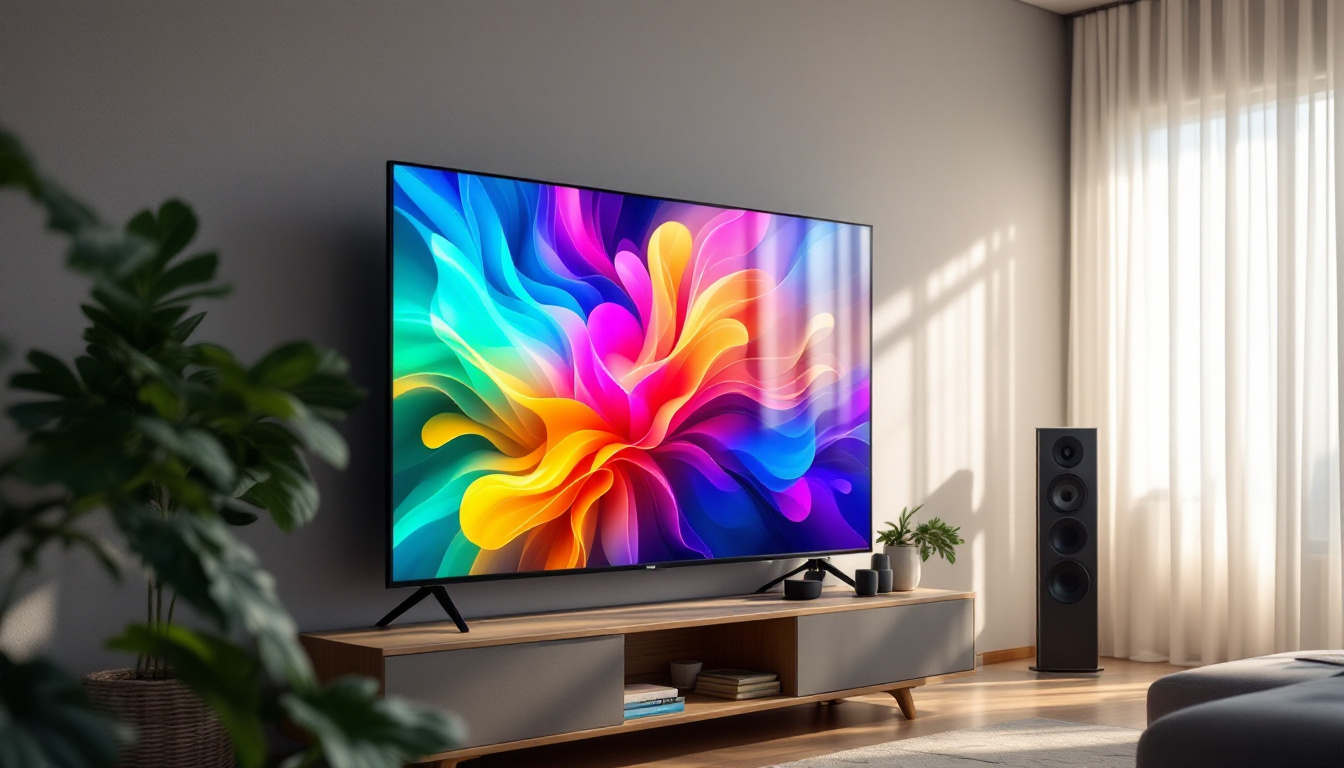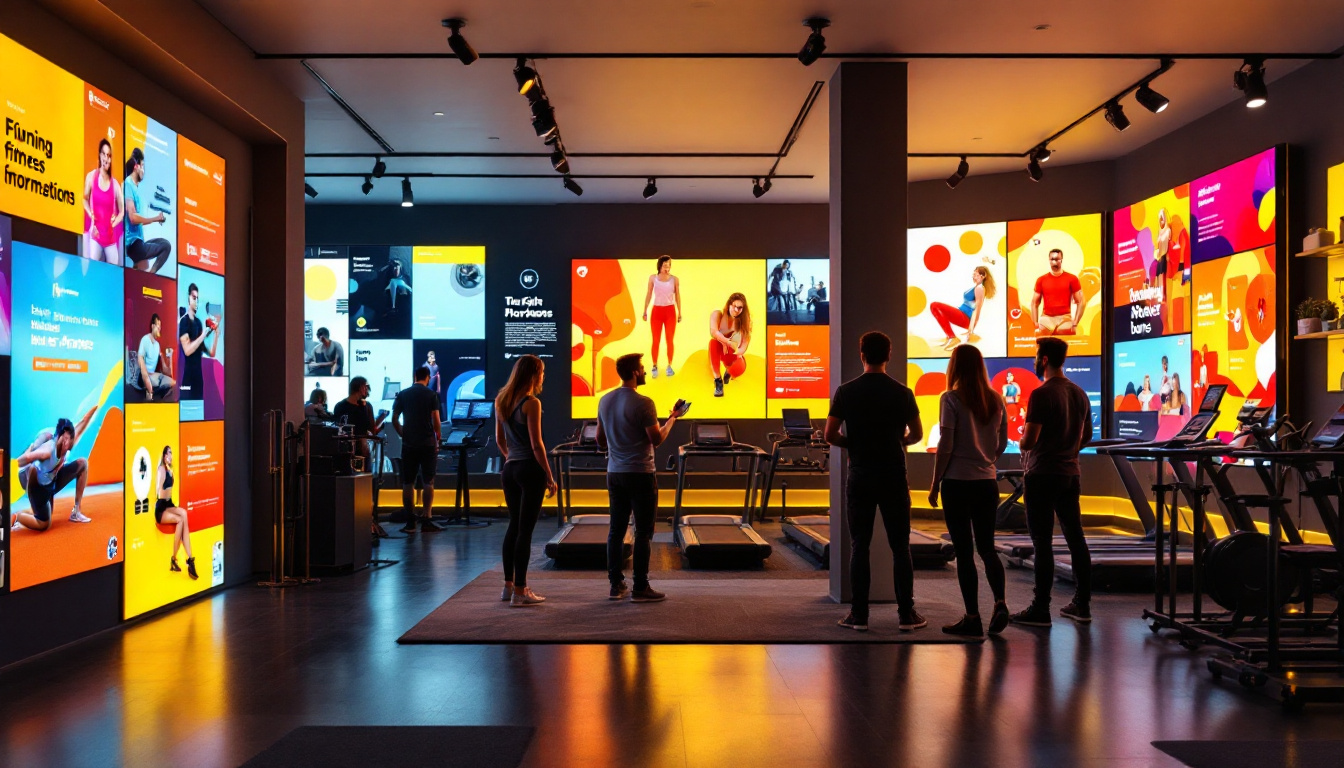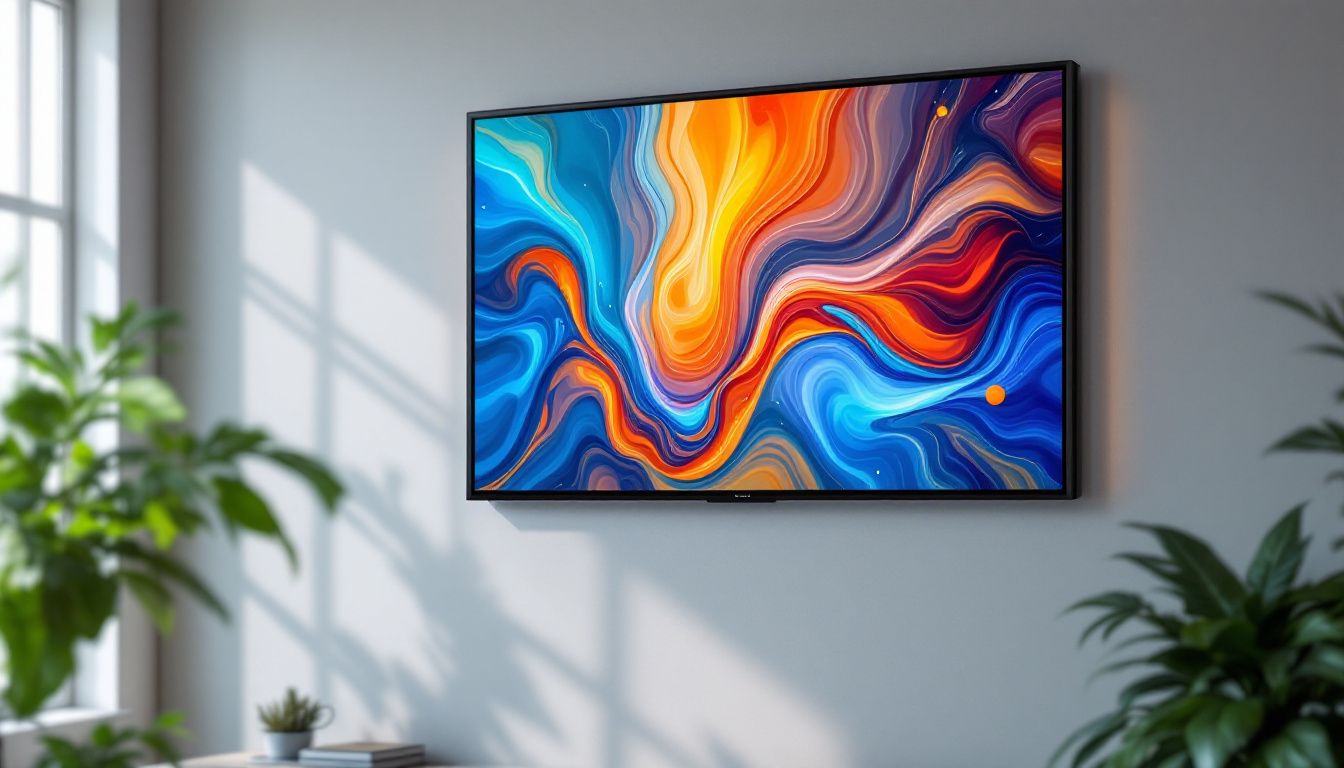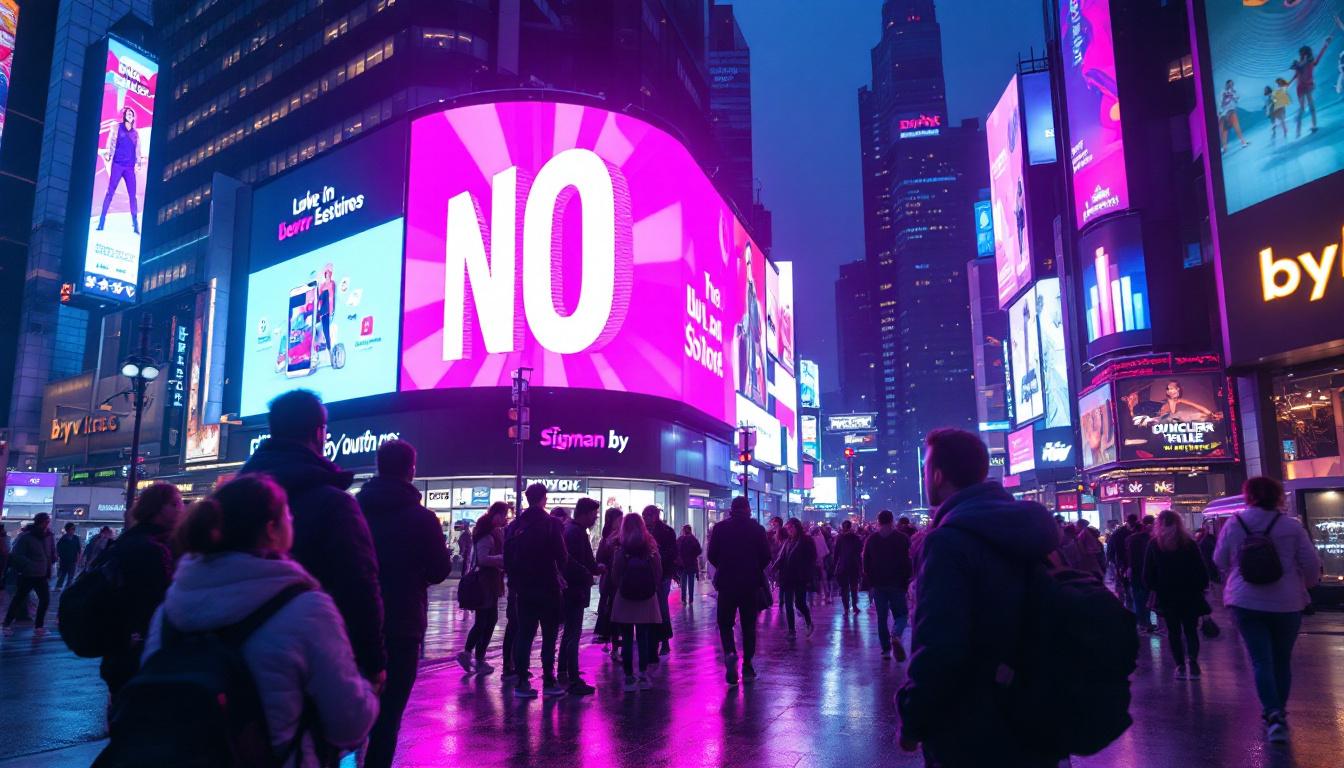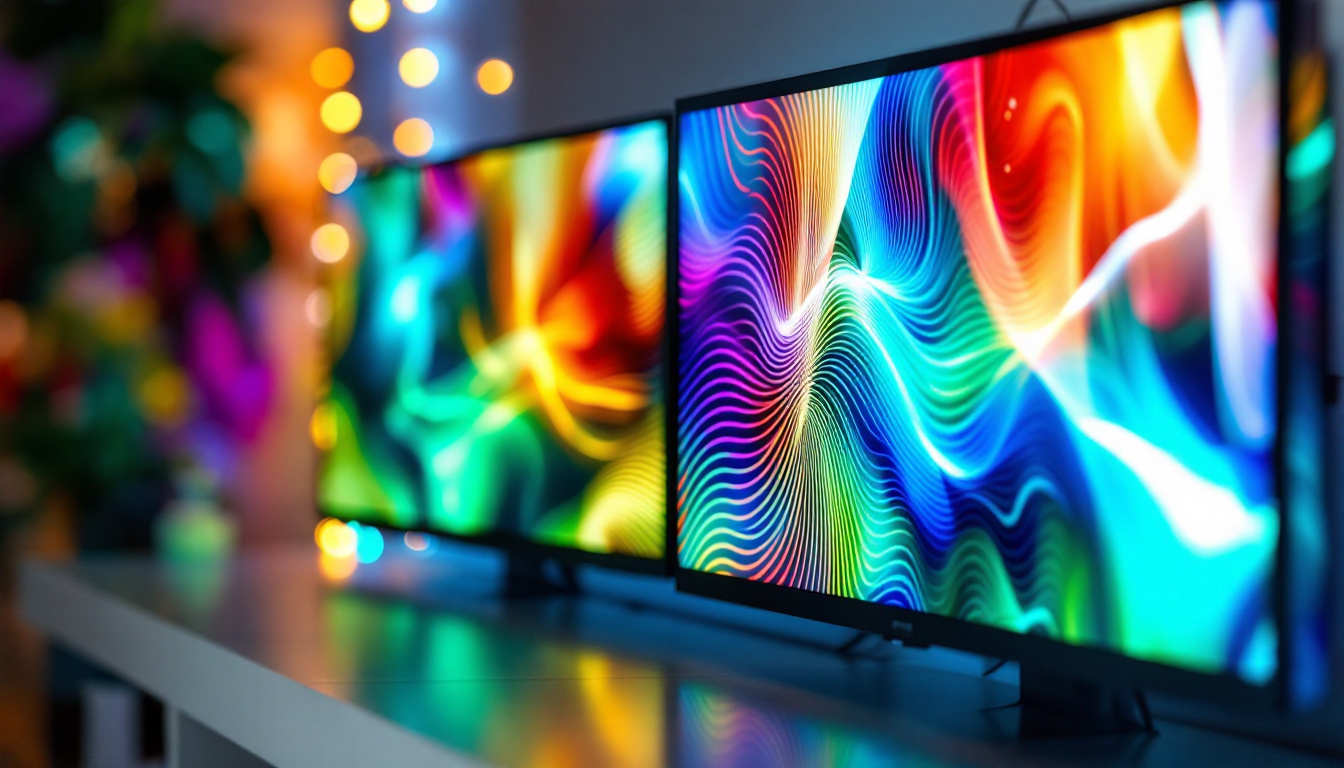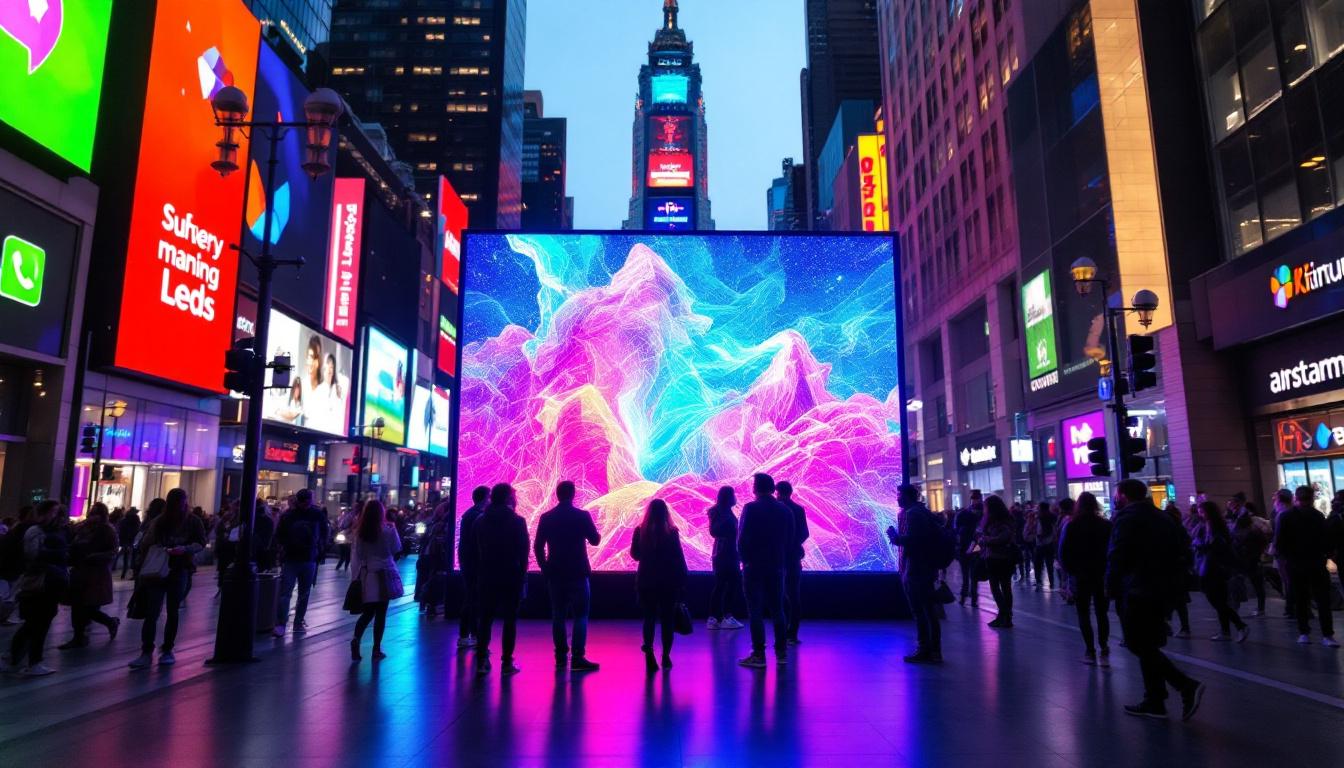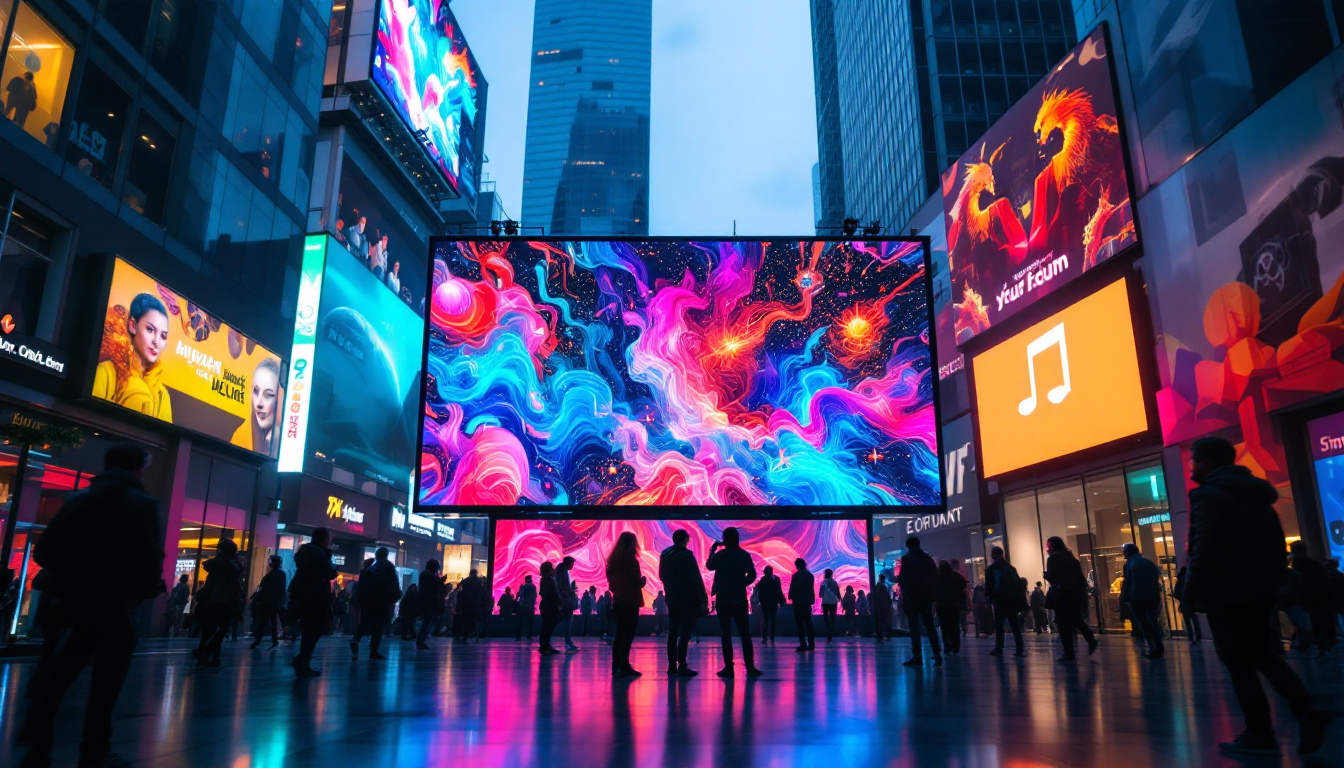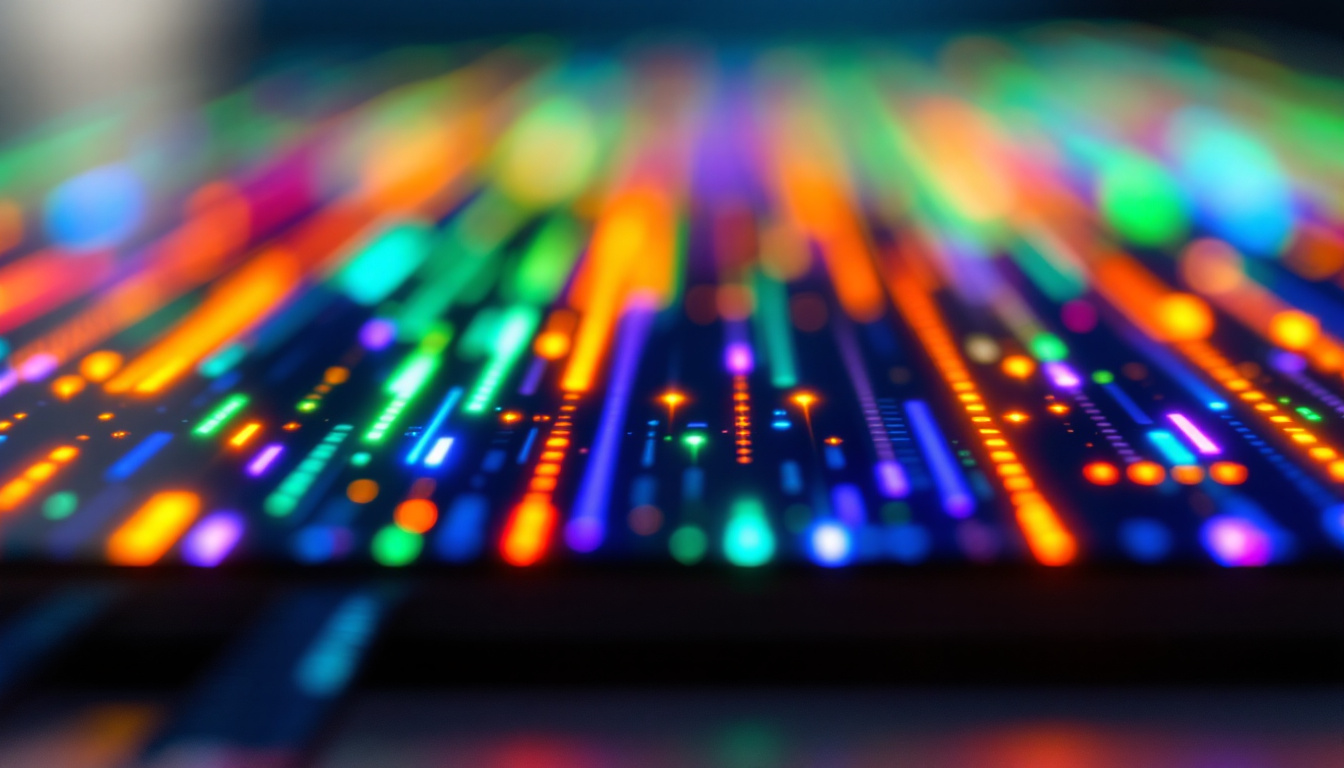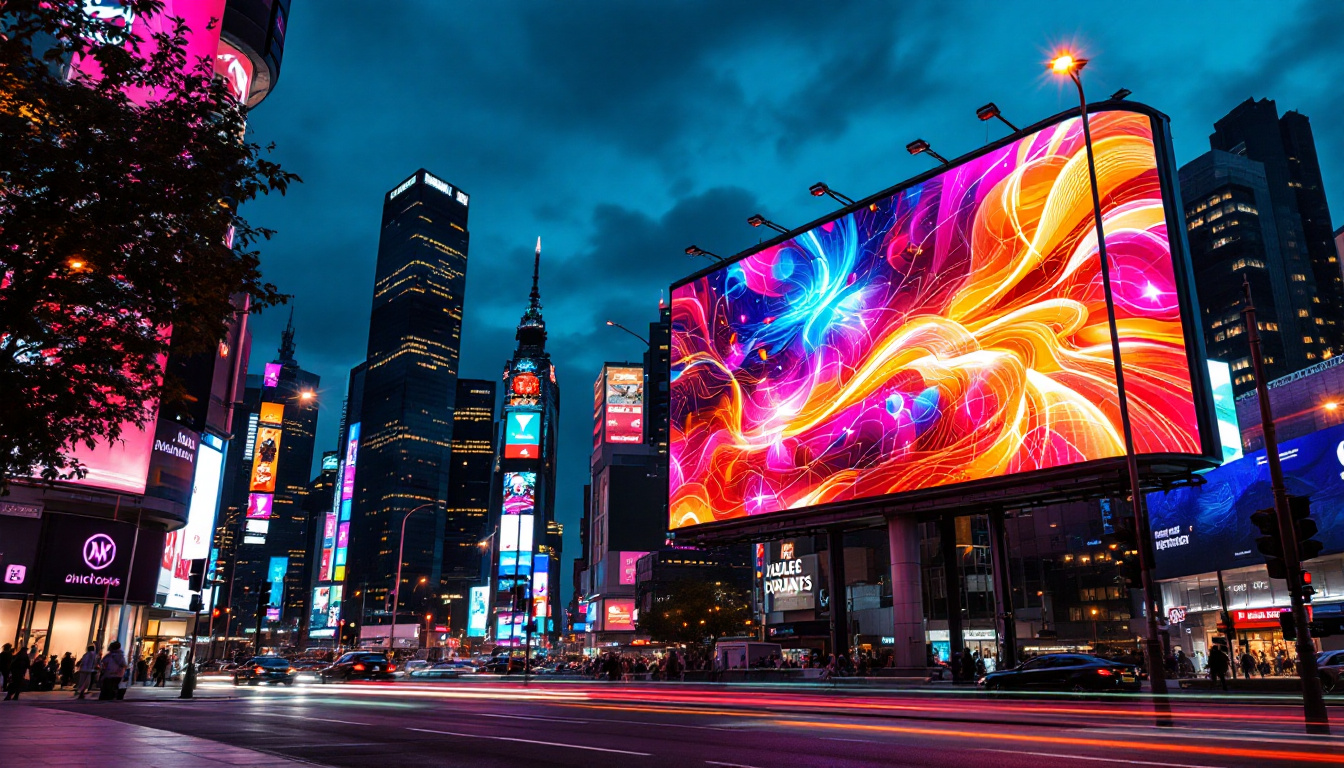In an increasingly digital world, the demand for effective and eye-catching advertising solutions has surged. One of the most innovative and versatile options available today is the LED display. These displays have transformed the way businesses communicate their messages, and understanding their functionality and benefits is essential for anyone looking to enhance their marketing strategy. This article delves into the various aspects of LED displays, including their types, advantages, and applications, while also exploring the concept of discount displays.
Understanding LED Displays
LED displays, or Light Emitting Diode displays, are screens that use LED technology to produce images and videos. Unlike traditional displays that rely on fluorescent or incandescent lighting, LED displays are more energy-efficient and offer superior brightness and color accuracy. This technology has become a popular choice for a wide range of applications, from advertising billboards to indoor signage.
The Technology Behind LED Displays
The core of an LED display consists of numerous tiny light-emitting diodes that work together to create a larger image. Each diode emits light when an electric current passes through it, allowing for a vibrant display of colors. The arrangement of these diodes can vary, leading to different types of LED displays, including surface-mounted devices (SMD) and traditional through-hole LEDs.
In SMD displays, the diodes are mounted directly onto the surface of the display, allowing for finer pixel pitch and better image quality. This makes them ideal for indoor use, where high resolution is crucial. On the other hand, traditional LED displays often use larger diodes that are spaced further apart, making them more suitable for outdoor applications where visibility from a distance is paramount.
Types of LED Displays
LED displays can be categorized into several types based on their application and design. The most common types include:
- Outdoor LED Displays: These displays are designed to withstand harsh weather conditions and are typically used for billboards, stadium screens, and other large-scale advertising.
- Indoor LED Displays: Ideal for shopping malls, conference rooms, and retail environments, indoor displays offer high resolution and are often used for presentations and promotions.
- Transparent LED Displays: These innovative displays allow light to pass through, making them perfect for storefronts and exhibitions where visibility is essential.
Advantages of LED Displays
LED displays offer numerous advantages that make them a preferred choice for businesses and organizations looking to enhance their visibility and engagement. Understanding these benefits can help in making informed decisions regarding advertising strategies.
Energy Efficiency
One of the most significant advantages of LED displays is their energy efficiency. Compared to traditional lighting solutions, LED technology consumes considerably less power, resulting in lower electricity bills. This not only benefits the environment but also allows businesses to allocate their resources more effectively.
High Brightness and Visibility
LED displays are known for their exceptional brightness, which makes them highly visible even in direct sunlight. This characteristic is particularly advantageous for outdoor advertising, where competing with natural light can be challenging. The high contrast and vivid colors of LED displays ensure that messages are communicated clearly, regardless of the viewing conditions.
Longevity and Durability
LED technology is inherently more durable than traditional display technologies. LED displays have a longer lifespan, often lasting up to 100,000 hours or more, which translates to years of reliable service. Additionally, they are less susceptible to damage from impacts or environmental factors, making them a sound investment for businesses.
Applications of LED Displays
The versatility of LED displays allows them to be used in a wide array of applications across various industries. From retail to entertainment, the potential uses are virtually limitless.
Advertising and Marketing
One of the most common applications of LED displays is in advertising and marketing. Businesses utilize these displays to showcase promotions, new products, and brand messages in a dynamic and engaging manner. The ability to change content quickly and easily means that companies can adapt their messaging in real-time, responding to market trends and customer preferences effectively.
Events and Entertainment
LED displays have become a staple in the events and entertainment industry. Concerts, festivals, and sporting events frequently employ large LED screens to enhance the audience experience. These displays provide clear visuals and can be synchronized with audio for a more immersive experience. Additionally, they can be used for live streaming and broadcasting, allowing remote audiences to participate in real-time.
Transportation and Wayfinding
In transportation hubs such as airports and train stations, LED displays play a crucial role in providing real-time information to travelers. From flight schedules to wayfinding signage, these displays improve the overall efficiency and experience of navigating through busy environments. Their high visibility ensures that important information is easily accessible to all passengers.
Discount Displays: A Cost-Effective Solution
While LED displays offer numerous benefits, the initial investment can be a concern for many businesses. This is where discount displays come into play, providing a more affordable option without sacrificing quality.
What are Discount Displays?
Discount displays refer to LED display solutions that are offered at reduced prices, often due to factors such as bulk purchasing, seasonal sales, or refurbished units. These displays maintain the quality and functionality of standard LED displays but are available at a more accessible price point. For businesses looking to enhance their advertising capabilities without breaking the bank, discount displays can be an excellent solution.
Benefits of Choosing Discount Displays
Opting for discount displays can provide several advantages:
- Cost Savings: The most apparent benefit is the significant cost savings. Businesses can invest in high-quality LED displays while staying within budget constraints.
- Access to Advanced Technology: Discount displays often feature the same advanced technology as their full-priced counterparts, allowing businesses to benefit from the latest innovations without the hefty price tag.
- Flexibility in Marketing Strategies: With lower costs, businesses can allocate more resources to other marketing initiatives, such as content creation or promotional campaigns.
Choosing the Right LED Display
When considering an LED display, several factors should be taken into account to ensure that the chosen solution aligns with the business’s needs and objectives. Understanding these factors can help streamline the decision-making process.
Assessing Your Needs
Before purchasing an LED display, it’s essential to assess the specific needs of the business. Consider the intended use of the display, the target audience, and the environment in which it will be placed. For example, an outdoor display will require different specifications than an indoor one, including brightness levels and weather resistance.
Determining Budget
Establishing a budget is a crucial step in the purchasing process. While discount displays offer a more affordable option, it’s still important to determine how much can be allocated for the investment. This budget should include not only the cost of the display itself but also installation, maintenance, and any additional features that may be required.
Researching Suppliers
Once the needs and budget have been established, researching suppliers is the next step. Look for reputable companies that specialize in LED displays and have a track record of providing quality products and services. Reading customer reviews and testimonials can provide valuable insights into the reliability and performance of different suppliers.
Installation and Maintenance of LED Displays
Proper installation and maintenance are vital to ensuring the longevity and optimal performance of LED displays. Understanding these aspects can help businesses maximize their investment.
Installation Considerations
When installing an LED display, several factors should be considered, including location, mounting options, and power supply requirements. It’s often advisable to work with professionals who have experience in installing LED displays to ensure that the setup is done correctly and safely.
Regular Maintenance
Maintaining an LED display involves regular cleaning and inspections to ensure that it continues to function optimally. Dust and debris can accumulate on the surface, affecting visibility and performance. Additionally, periodic checks of the electrical components and connections can help identify potential issues before they become significant problems.
Future Trends in LED Display Technology
The LED display industry is continually evolving, with new technologies and trends emerging regularly. Keeping an eye on these developments can help businesses stay ahead of the curve and make informed decisions about their advertising strategies.
Advancements in Resolution and Pixel Density
As technology progresses, the resolution and pixel density of LED displays are improving. Higher resolutions allow for more detailed images and videos, making displays more engaging and visually appealing. This trend is particularly significant for indoor displays, where close viewing distances are common.
Integration with Smart Technology
Another exciting trend is the integration of LED displays with smart technology. This includes features such as remote content management, real-time analytics, and interactive capabilities. Businesses can leverage these advancements to create more personalized and effective advertising experiences for their audiences.
Conclusion
LED displays represent a powerful tool for businesses looking to enhance their visibility and communication strategies. With their energy efficiency, high brightness, and versatility, they have become a staple in various industries. Discount displays provide an accessible option for those seeking to harness the benefits of LED technology without incurring significant costs.
By understanding the different types of LED displays, their advantages, and the factors to consider when choosing one, businesses can make informed decisions that align with their goals. As technology continues to advance, staying updated on the latest trends will ensure that organizations remain competitive in an ever-evolving marketplace.
In a world where effective communication is paramount, investing in LED displays—especially discount options—can significantly enhance a business’s advertising and marketing efforts. With the right display, companies can capture attention, convey messages, and ultimately drive success.
Explore Cutting-Edge LED Display Solutions with LumenMatrix
Ready to elevate your brand’s presence and captivate your audience like never before? Discover the innovative world of LumenMatrix, where advanced LED display technology meets creative visual storytelling. From the bustling streets with Outdoor LED Wall Displays to the dynamic environment of sports arenas with LED Sports Displays, LumenMatrix offers a comprehensive range of solutions tailored to your unique needs. Embrace the future of advertising and create unforgettable experiences with our Indoor LED Walls, Vehicle Displays, LED Posters, Floor LEDs, Custom Displays, All-in-One solutions, and Transparent Displays. Don’t miss the opportunity to transform your visual communication. Check out LumenMatrix LED Display Solutions today and step into a world where your message shines brightest.

